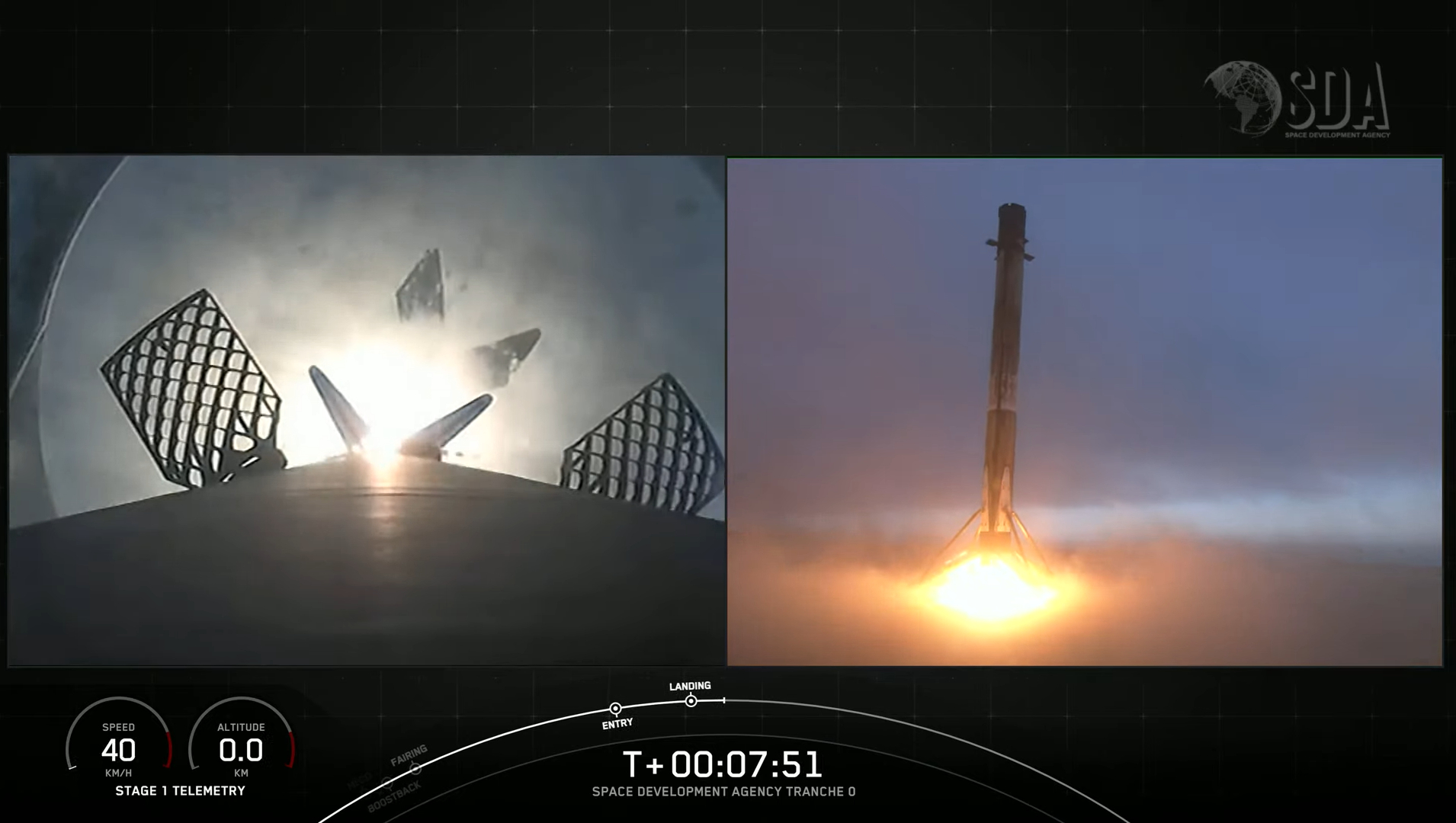SpaceX launched a set of advanced new satellites for the U.S. Space Force Sunday (April 2) after days of delay caused by a last-second abort last week.
A Falcon 9 rocket topped with 10 spacecraft for the Space Force's Space Development Agency (SDA) lifted off from California's Vandenberg Space Force Base Sunday at 10:29 a.m. EDT (1429 GMT; 7:29 a.m. local California time). The rocket's first stage booster then returned to Earth safely, touching down at Vandenberg's Landing Zone 4 just under eight minutes after liftoff.
"This was the second launch and landing for this specific booster and our 183rd overall successful recovery of an orbital class rocket," SpaceX production engineer Jessie Anderson said during live commentary. The rocket previously helped launch a batch of SpaceX's Starlink internet satellites to orbit, according to a SpaceX mission description.
SpaceX did not show live views of the launch or payload fairing separation from the Falcon 9's second stage at the request of the Space Development Agency, with the company ending its livestream shortly after its booster landing.
Related: What is the U.S. Space Force and what does it do?

SpaceX's mission description did not detail when the Tranche 0 spacecraft are scheduled to be deployed. That's not terribly surprising; details about national security missions such as this one are often hard to come by.
We do know a bit about the Tranche 0 spacecraft, however. For example, they are the first members of the Proliferated Warfighter Space Architecture (PWSA), a constellation the SDA will assemble in low Earth orbit.
"Under the plan, the Space Force will have hundreds of small satellites, with new ones launched every few years to increase resilience and capabilities in orbit," Air and Space Forces Magazine wrote about the PWSA.
Get the Space.com Newsletter
Breaking space news, the latest updates on rocket launches, skywatching events and more!


The 10 Tranche 0 satellites cost about $15 million each, the magazine added. Eight of the spacecraft launched on Sunday will relay data, and two will track missiles, though this first set is intended primarily to demonstrate capabilities that future SDA satellites will take operational.
Another Tranche 0 satellite batch is expected to launch in June, according to Air and Space Forces Magazine.
"The entire tranche consists of 28 satellites — 20 for data transport and eight for missile tracking," the outlet wrote.
Editor's note: This story was updated on April 2 to reflect the successful launch of the Tranche 0 satellites by SpaceX.
Mike Wall is the author of "Out There" (Grand Central Publishing, 2018; illustrated by Karl Tate), a book about the search for alien life. Follow him on Twitter @michaeldwall. Follow us @Spacedotcom, or on Facebook and Instagram.
Join our Space Forums to keep talking space on the latest missions, night sky and more! And if you have a news tip, correction or comment, let us know at: community@space.com.

Michael Wall is a Senior Space Writer with Space.com and joined the team in 2010. He primarily covers exoplanets, spaceflight and military space, but has been known to dabble in the space art beat. His book about the search for alien life, "Out There," was published on Nov. 13, 2018. Before becoming a science writer, Michael worked as a herpetologist and wildlife biologist. He has a Ph.D. in evolutionary biology from the University of Sydney, Australia, a bachelor's degree from the University of Arizona, and a graduate certificate in science writing from the University of California, Santa Cruz. To find out what his latest project is, you can follow Michael on Twitter.









